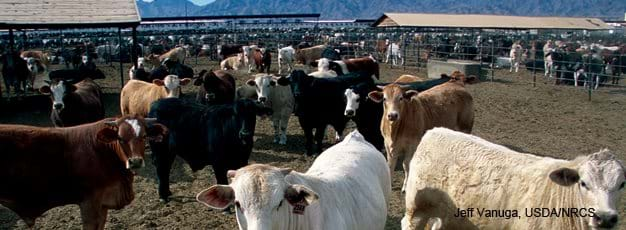Million-Dollar Farms Dominate Production of Some Commodities

In 2007, 37,300 farms—2 percent of U.S. farming operations—accounted for half of U.S. agricultural production, according to the Agricultural Resource Management Survey. These farms were million dollar farms—that is, they had sales of $1 million or more. Operating profit margins are high for million-dollar farms, giving them a competitive advantage (see chart, “Operating profit margins for farms increase with sales”).Million-dollar farms accounted for roughly 60 to 70 percent of the production of five major commodities: dairy products, hogs, high-value crops, poultry, and beef, The largest million-dollar farms, those with sales of at least $5 million, accounted for 42 percent of beef cattle production, 40 percent of milk production, and 35 percent of high-value crop production.
Certain characteristics of high-value crops make their production more routine, or standardized, which encourages large-scale farming. High-value crops are often irrigated, which reduces the variability in production conditions. They are more labor intensive than other crops, but the labor is applied in a relatively small area—compared with large farms specializing in grains, for example—making it easier to supervise and manage. In areas like California, several plantings and harvests of vegetables may occur in a year, which means labor is used more continuously.
Beef cattle production has three basic phases, with million-dollar cattle farms specializing in the last phase. In the first phase, cow-calf operations produce and sell calves. In the second phase, stocker operations buy the calves and pasture them to gain weight. Finally, fed-cattle operations take yearlings from stocker operations, place them in feedlots until they reach slaughter weight, and ship them to packers. Cow-calf enterprises are typically found on small farms. Million-dollar beef farms—especially those with sales of at least $5 million—are much more likely to be fed-cattle operations.
Several technological advances helped make livestock production (dairy, hogs, poultry, and fed cattle) more routine, making it easier for farms to operate on a large scale. Milk and livestock production moved from an open environment to climate-controlled buildings, making production less dependent on the weather. Other technologies—disease control, transportation, and nutrition—have increased the number of production cycles per year.
Million-dollar farms accounted for 25 percent of U.S. grain production in 2007—a relatively small amount compared with million-dollar farms' share of U.S. high-value crop and livestock production. Grain growers have only one production cycle per year and highly seasonal labor requirements, which hinder large-scale production. Million-dollar grain farms made up 2 percent of all U.S. grain farms in 2007, compared with 9 percent of dairy farms and 17 percent of poultry farms.
Million-Dollar Farms in the New Century, by Robert A. Hoppe, Penni Korb, and David E. Banker, USDA, Economic Research Service, December 2008


